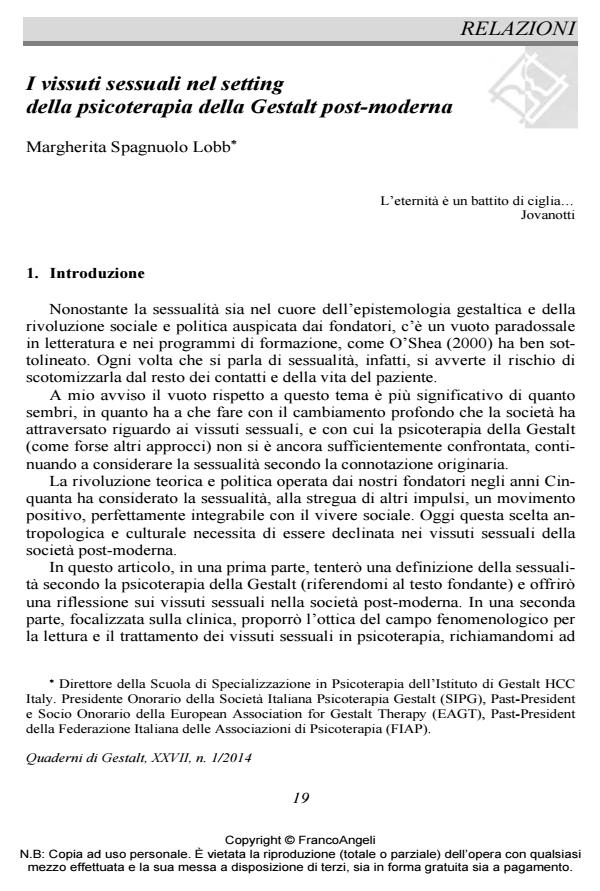Sexual feelings in Gestalt therapy postmodern setting
Journal title QUADERNI DI GESTALT
Author/s Margherita Spagnuolo Lobb
Publishing Year 2014 Issue 2014/1
Language Italian Pages 21 P. 19-39 File size 135 KB
DOI 10.3280/GEST2014-001003
DOI is like a bar code for intellectual property: to have more infomation
click here
Below, you can see the article first page
If you want to buy this article in PDF format, you can do it, following the instructions to buy download credits

FrancoAngeli is member of Publishers International Linking Association, Inc (PILA), a not-for-profit association which run the CrossRef service enabling links to and from online scholarly content.
The article is a contribution to a Gestalt perspective on sexuality in contemporary psychotherapy. Starting from a definition of sexuality according to Perls, Hefferline and Goodman, the author describes the evolution of sexual mores in post-modern society, referring to the reflections of contemporary scholars such as Galimberti and Bauman. Overcoming the Oedipal logic, the author then proposes a reading of sexual experiences in psychotherapy from the perspective of the contact boundary in the phenomenological field, allowing us to perceive relational elements implicitly offered by the patient. The author then provides suggestions and examples to guide clinicians in working with sexual experiences in contemporary psychotherapeutic setting.
Keywords: Sexuality, gestalt therapy, setting, postmodern society, mise en abîme.
Margherita Spagnuolo Lobb, I vissuti sessuali nel setting della psicoterapia della Gestalt post-moderna in "QUADERNI DI GESTALT" 1/2014, pp 19-39, DOI: 10.3280/GEST2014-001003